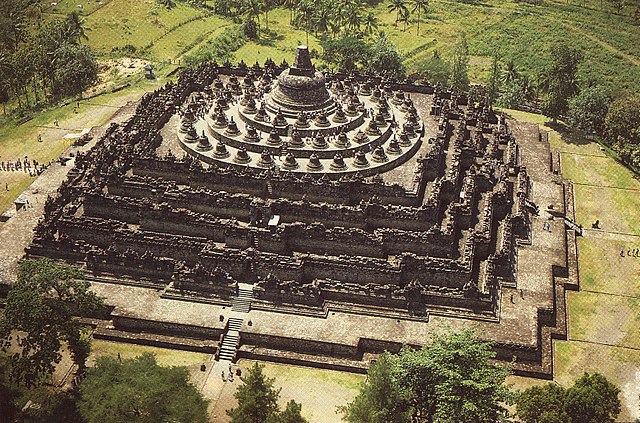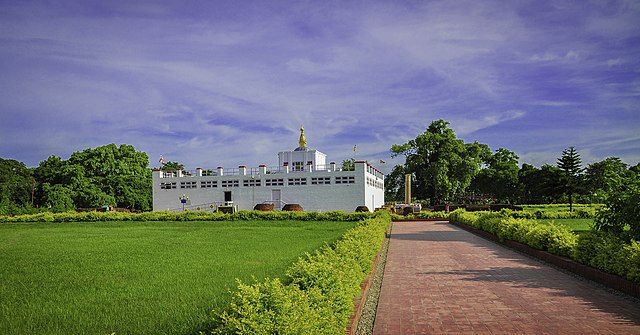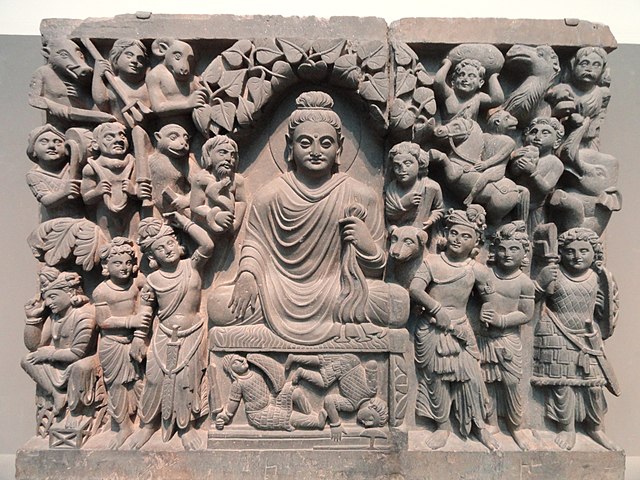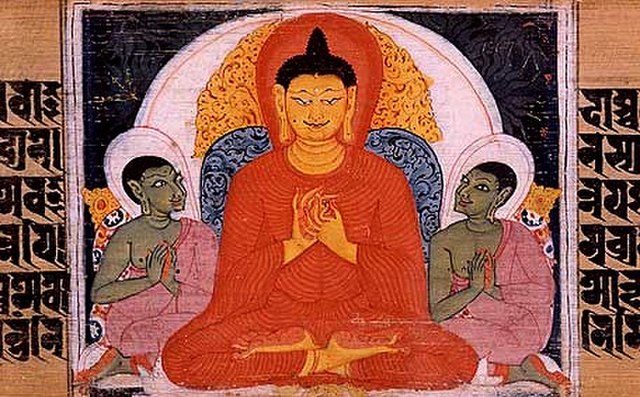Buddhist cosmology is the description of the shape and evolution of the Universe according to Buddhist scriptures and commentaries.
Buddhist mandala with Mount Meru shown in the center depicting the terrestrial universe divided into four quadrants each containing oceans and continents with the known world of humans, Jambudvīpa, located in the south alongside three other continents named Pūrvavideha, Aparagodānīya and Uttarakuru.
Wat Arun's pagodas were built and located to simulate the Buddhist Cosmology
Aerial view of Borobudur
Buddhist cosmological image of alternate world systems.
Buddhism, also known as Buddha Dharma and Dharmavinaya, is an Indian religion and philosophical tradition based on teachings attributed to the Buddha. It is the world's fourth-largest religion, with over 520 million followers, known as Buddhists, who comprise seven percent of the global population. Buddhism originated in the eastern Gangetic plain as a śramaṇa–movement in the 5th century BCE, and gradually spread throughout much of Asia via the Silk Road.
Mayadevi Temple marking the Buddha's birthplace in Lumbini
Enlightenment of Buddha, Kushan dynasty, late 2nd to early 3rd century CE, Gandhara
The Buddha teaching the Four Noble Truths. Sanskrit manuscript. Nalanda, Bihar, India
Traditional Tibetan Buddhist Thangka depicting the Wheel of Life with its six realms








